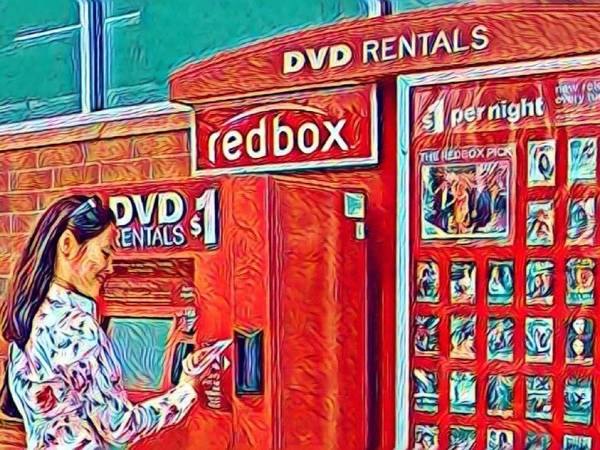Mini KTV, automatic coffee machine. Why is this vending opportunity a good business?

Vending machines are nothing new. It can be traced back to the first century AD Greek Hiro made a device to automatically sell holy water, in 1925 the United States developed a vending machine for selling cigarettes, and then there were all kinds of modern vending machines for selling stamps and tickets. In Japan, the country with the most developed unmanned retail equipment, there are 5.5 million vending machines in various formats (selling drinks, cigarettes, coffee, vegetables, dolls, cosmetic products and hot noodles. An average of 23 people own one; in the United States, the number is 35.
In China, when it comes to vending machines, many people's first reaction is Youbao machines, which can be found everywhere in office buildings in subway stations. the automatic vending equipment company, which mainly sells drinks and snacks, was founded in 2010. In the first six months of 2016, with 30, 000 directly operated equipment and 15000 joining equipment, it recorded 877 million business income and a gross profit margin of 40.49%. The new third board is listed.
At the end of 2016, a new batch of automatic selling equipment came into the view of capital. Automatic orange juice machine, automatic coffee machine, automatic snack machine, automatic mask machine, as well as mini KTV (friendly singing, Mida) and mini gym (super orangutan) that sell services instead of products.
In this year's vending machine, the question we need to answer is not just why, but why now (why now)? Three trends point to vending devices:
Large-scale infrastructure: reduction of hardware costs of the Internet of things, networking of all equipment and inventory.
The popularity of mobile payment: improve the user experience than before, and payment itself can precipitate users to purchase data and devices ID/ Wechat Open Id, making offline hardware operational devices.
Capital support: ofo and mobike educated investors, offline equipment / hardware is not completely unable to invest, if the hardware itself can be profitable, the account can be understood, but also the target of investment; moreover, with the east wind of focus Media, add a screen or QR code entry, there will be advertising cash / traffic portal stories to tell.
Automatic selling equipment, in essence, replaces the manual part of the delivery of goods and services with machines; but it seems that no one is definitely not the end, but the result. At least in China, the annual artificial salary is not many times the hidden costs such as depreciation of a fully intelligent set of equipment with visual recognition and voice interactive data analysis (300000 of the hardware and software cost of a set of NCR equipment, depreciated in 5 years) and loss prevention.
The core of automatic selling is the deconstruction of function and traffic.
Deconstruction of function
There is a very interesting phenomenon in offline retail. Rent usually increases linearly with area, but sales do not increase linearly with area. Starbucks stores of 160 square meters, for example, usually sell less than twice as many as 80 square meters of Starbucks stores in the same area.
To improve profitability lies in a clear understanding of the drivers of revenue and the composition of costs, which requires the disassembly of the functions of a coffee shop. For example, a Starbucks can be roughly divided into three functional areas: production, sales, experience. Unlike experience-based coffee shops, the design of Starbucks disposable cups, stools and hard tables doesn't seem to want consumers to stay too long. It's best to buy to go. A large proportion of Starbucks orders should be to go.
In addition, in the sales section, the natural important role of stores (or more accurate door faces) is to undertake natural traffic in an environment to transform sales. Sales is like a window, and to undertake traffic more effectively, this "window" should be laid in as many scenes as possible. The last piece is production, the production plate actually has room for simplification, such as centralized production (Zhou's Black Duck, have one) or automatic production (Angel Orange, Lai Cup Coffee).
Deconstruction of traffic
Students who look at food and beverage chains or retail chains should have special feelings. Most of the time, the scale of such projects is restricted by the speed of taking storefronts, the traditional offline business format, frequently tens of thousands of square meters of venues, and hundreds of thousands of one-time decoration investments. coupled with the pre-site negotiations, pre-business recruitment and training cycle, it is really not an easy task. Stores are really not easy to open, and headquarters may use a term called "ping efficiency" (revenue per square meter of output is usually divided by the monthly flow of the whole store by the area of the store) to measure the performance of each store.
As in the example of the cafe above, if you split the revenue into each functional section, you will find that the most efficient way is to "keep only the smallest unit of product or service delivery and lay more contacts with a limited budget," according to teacher qu unbundling the facilities. If I can open a 50-square-meter beverage shop, I would rather open 10 5-square-meter mini beverage stores to reach more traffic; moreover, 50-square-meter shops may be difficult to find, but 5-square-meter shops can be found anywhere in schools, office buildings, subway stations and community merchants, lighter and closer to users. Wait, 5 square meters, it's almost a vending machine!
The convenience store is the deconstruction of the traditional supermarket, while the vending machine is the deconstruction of the convenience store. And this kind of deconstruction can produce players who will not appear in the traditional retail format. For example, Coca-Cola may not open physical stores, but it has laid out 500000 vending machines around the world; the number of vending machines in Nongfu Spring, a domestic player, is comparable to that of Youbao, and Wa claims to plant tens of thousands of machines this year.
A convenience store usually has 2000-4000 SKU, and the number of products that a brand can provide varies from tens to 100, so the brand has little incentive to support a specialty store on its own, but would rather endure the exploitation of terminal channels and accept the separation from real consumers. But vending machines seem to provide a good opportunity for brands to do brand display and direct sales at a lower cost-closer to users and accumulate sales data directly. Whether it is 5 square meters or 20 square meters, a vertical cabinet or a small space of walkin, the shape does not matter.
Vending machines seem to be a good business, but what kinds of vending machines are likely to make money? The core logic of automatic selling equipment is to lay the smallest units of deliverable products or services into the right scenes and users as much as possible, and to efficiently obtain natural / passive flow, in other words, the essence of automatic selling is supply-driven demand (promoting shared bikes, whether it's placing search ads or bus stop ads, it's better to put one in front of users.) It is precisely because this requires large-scale supply in a short period of time, which is something that capital can help. Based on passive traffic, the best categories sold automatically can be made by users without thinking, also known as suggestive consumption (on the contrary, the unsuitable category is planned consumption). Such as food and beverages, entertainment magazines. The second dimension of category selection is the unit economic model, which requires a higher customer unit price and gross margin space in this category to cover the cost of machine depreciation, rent and manual maintenance.
The following provides some core metrics metrics that VC usually pays attention to for reference:
1. Unit cost of hardware
If you are the head of a consumer brand with annual sales of 100 million units at a unit price of 100 million, selling 1 million units may be better than selling 1000 units and selling 100000 units, because in a market, brand users interact with each other-the more users you can infiltrate, the more you can gain brand loyalty. So when it comes to automatic equipment, if the unit price of a device is as low as possible under the condition that the network is operable, more units can be laid at the same cost.
2. Profit from sales (= sales-delivery cost)
The sale of standard circulation (prepackaged fast-moving consumer goods) provides convenience, but operators may not make much money. 5 yuan for a bottle of beverage, if the daily sales of the machine does not exceed 100 yuan, 30-35% of the gross profit space will be equal to the replenishment cost of human operation and maintenance, and efforts will be made to collect the spot rent. The choice of non-standard products such as orange juice, coffee, or simply service formats such as mini KTV (variable costs are ignored and prices are adjusted dynamically according to spare time and busy time), first, the unit price is high, but the gross profit is rich, which may be a better target.
3. Operational degree
The role of the Internet and the Internet of things lies in this. First, from the merchant side, the use of Iot and simple ERP makes it easier to replenish inventory, the networking of operation and maintenance improves the response speed of equipment maintenance, and the dynamic networking of sales makes the operation of each device can be monitored, but from the user side, the cold coin experience becomes a screen that can be paid by mobile phone. There are more ways to play at the user operation level.
4. Daily order quantity, number of users reached (advertising value)
Congratulations, if the format of the vending machine itself is profitable, then we can actually think about the additional advertising value built on natural flow. A shared bike with a manufacturing cost of 200 yuan flows through the hands of 10 people every day. Portable battery, which costs about 100 yuan, circulates twice a day, and a beverage machine with a manufacturing cost of 20, 000 yuan sells 50 cups a day with a waiting time of 30 seconds. What's even more sexy is that the hardware laying scene is somewhat accurate in selecting the people you want to reach.
At this point, I suddenly feel that self-selling equipment is another important meaning for us and other social fear patients, which is to reduce a lot of meaningless boos and interactions. I sipped the hot latte from the automatic coffee machine with satisfaction.
Important Notice :
前街咖啡 FrontStreet Coffee has moved to new addredd:
FrontStreet Coffee Address: 315,Donghua East Road,GuangZhou
Tel:020 38364473
- Prev

Why Vietnamese don't drink tea and like to drink "egg" coffee
Egg coffee, which is popular in Hanoi cafes in Vietnam, is very popular with tourists. (photo / Shutterstock) A corner of Hanoi Cafe, which is full of Vietnamese style. (photo / Shutterstock) the local topic in Vietnam: gourmet Egg Coffee Vietnam has been ruled by China for thousands of years, but tea culture is popular in China. Why is coffee culture popular in Vietnam instead? This fear
- Next

Is white coffee white coffee?
We know that black coffee is brown and black, so is the packet of coffee white? In fact, white coffee is not white coffee, it shows a light milky golden yellow, looks more similar to the color of milk tea. Why is white coffee different in color from other coffees? The reason why white coffee has such a distinctive color is that its production process is different from that of ordinary coffee. General
Related
- Customers have "changed" Manner's new products! Shop assistant: Please don't mess around!
- Remove sockets in customer areas at Starbucks stores?! Netizen: I won't go if I really tear it down
- What is the difference between the taste steps of sun-dried coffee and washed coffee? Why is sun-cured coffee sweeter and washed coffee sour?
- The recipe for salty grapefruit dirty is revealed! Coffee Festival salty grapefruit dirty coffee making materials parameters ratio milk share!
- How about the flavor of Sunlight 74158 at Sidamo Banshaha Mathieu Processing Factory in Ethiopia? 74158 Share the proportion of coffee brewing parameters!
- What effect does Italian American coffee with filter paper have? Will coffee taste better if it is put on filter paper at the bottom of the powder bowl?
- What is the color difference in coffee beans? What are the characteristics of honey processed coffee beans? Why are the anaerobically treated coffee beans uneven in color?
- How does novice Xiaobai quickly get started and make coffee? Newbies learn to make coffee by hand and share the specific steps and process process!
- Costa tea has a shelf life of 100 years?! Expert: Unable to verify
- It's a huge uproar! American milk addition was rejected by Manner employees?!

